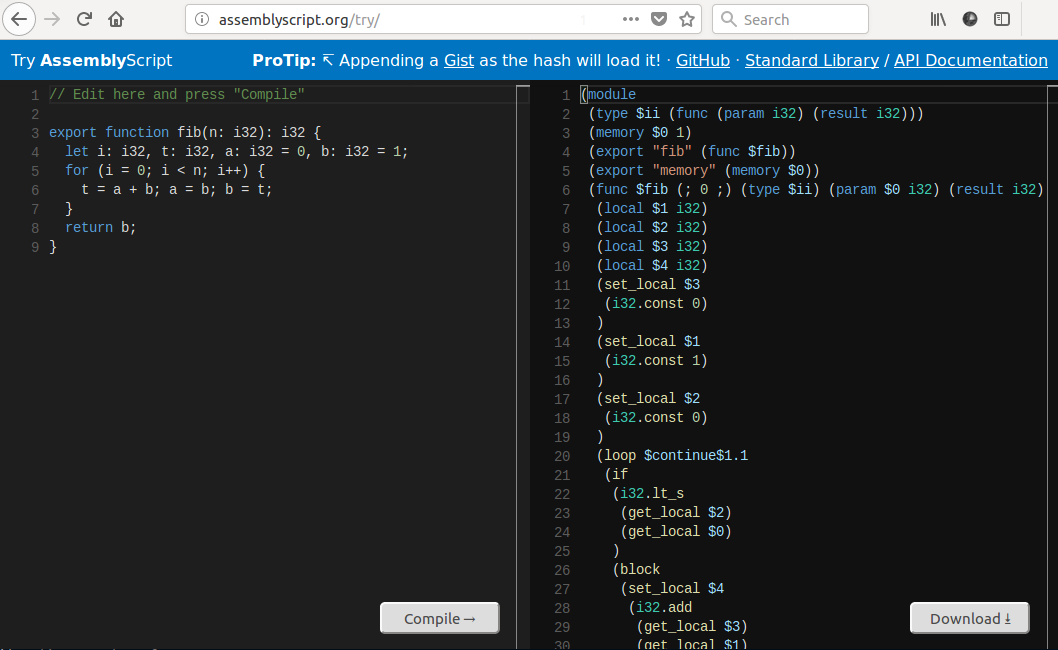binaryen.js
Creating WebAssembly
from JavaScript
Alon Zakai
Background
WebAssembly (wasm) is a new binary executable format for the web.
It's compact and fast.
Binaryen
A compiler library for WebAssembly, providing a bunch of useful things.
For example, an optimizer: shrinks optimized LLVM wasm binaries by ~5% (C++ or Rust) by just doing
wasm-opt -Os input.wasm -o output.wasm
(like a JavaScript minifier, but for WebAssembly)
You can also write a compiler
with Binaryen
- Has a C API
- Has a JavaScript port: binaryen.js
binaryen.js
API lets you:
- Create Binaryen IR
- Optimize it, etc.
- Generate wasm from that
binaryen.js is used by AssemblyScript, a subset of TypeScript that compiles to WebAssembly:

Creating IR
// Example from a Mandlebrot computation
// if we ran enough iterations, return 0
var code = module.if(
module.i32.ge_u( // >= (unsigned)
module.get_local(6, Binaryen.i32), // the counter
module.i32.const(MAX_ITERS_PER_PIXEL) // the limit
),
module.return(
module.i32.const(0)
)
);
Creating wasm
// Create a module
var module = new Binaryen.Module();
// [..create module contents, examples on last slide..]
// Optionally, optimize the module
module.optimize();
// Get a wasm binary (in typed array form)
var binary = module.emitBinary();
Running the wasm
// Compile the binary
WebAssembly.instantiate(binary, {}).then(function(output) {
var wasm = output.instance;
// Call it!
wasm.exports.function_name();
});
The end, thanks for listening!